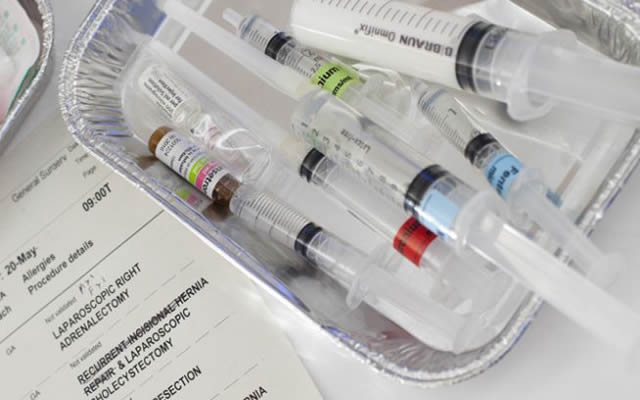Overview
Question: How could you reduce the risk of a sharps injury in your hospital?
Spend a few minutes writing down your answers on a piece of paper (or discussing in a group). You may find that it helps to think of what you could do:
- To prepare for using a sharp object such as a needle
- Whilst using
- After using that sharp object.

Question: How could you reduce the risk of a sharps injury in your hospital?
Spend a few minutes writing down your answers on a piece of paper (or discussing in a group). You may find that it helps to think of what you could do:
- To prepare for using a sharp object such as a needle
- Whilst using
- After using that sharp object.
Answer: Consider the following suggestions:

Question: How could you reduce the risk of a sharps injury in your hospital?
Spend a few minutes writing down your answers on a piece of paper (or discussing in a group). You may find that it helps to think of what you could do:
- To prepare for using a sharp object such as a needle
- Whilst using
- After using that sharp object.
Answer: Consider the following suggestions:
- Suggestions for preparing for using a sharp
- Suggestions for during and after using a sharp
Suggestions for preparing for using a sharp:
- If it is an injection, consider whether it is necessary. It usually will be in anaesthesia. However, overall, 60-80% of injections were judged to be unnecessary by WHO in 1999, usually antibiotics, which could have been given orally
- Wear gloves when there's a risk of contact with blood or body fluids. In one study, a glove was found to remove 97% of blood from tapered needles and 65% from cutting needles
- Cover any areas of your broken skin with dressings
- Wear closed footwear (not sandals)
- Bring sharps disposal container to within arms reach of procedure
- Get help if preparing to use a sharp, e.g. an injection for an agitated or confused patient
Question: How could you reduce the risk of a sharps injury in your hospital?
Spend a few minutes writing down your answers on a piece of paper (or discussing in a group). You may find that it helps to think of what you could do:
- To prepare for using a sharp object such as a needle
- Whilst using
- After using that sharp object.
Answer: Consider the following suggestions:
- Suggestions for preparing for using a sharp
- Suggestions for during and after using a sharp
Suggestions for during and after using a sharp:
- Do not resheath needle. If it is essential to resheath: scoop using one hand, and only when sheath is on, press it home with other hand
- Do not bend or break needles before disposal
- Syringe and needle should be disposed of together without disconnecting
- Use forceps to remove scalpel blades
- Do not pass sharp hand to hand
- Discard immediately after use
- Disposal should be the responsibility of the person who has used the sharp implement